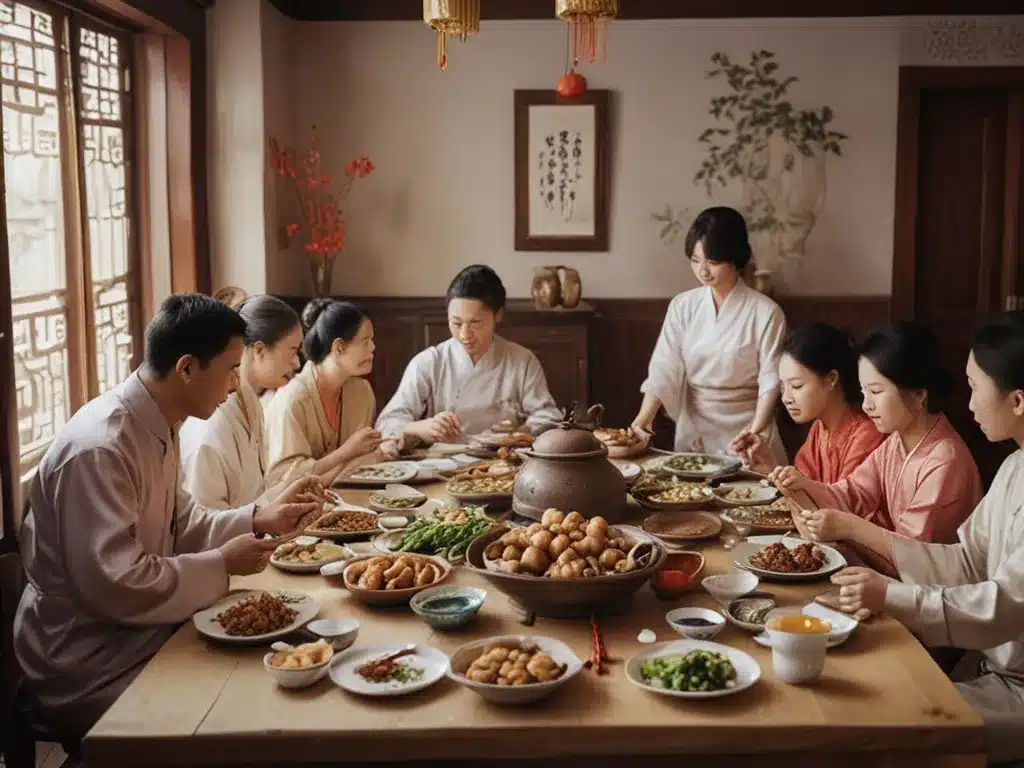
Greeting and Seating Customs
As a guest in China, I found greeting and seating customs to be very important rituals in Chinese dining. When first arriving at the dining table, I will gently say “Nihao” (Hello) to the host and other diners already seated. The host will then indicate where I should sit according to seniority. Elderly guests and honored visitors will sit facing the entrance, while younger guests sit further down the table. This careful consideration of seating order expresses respect for social hierarchy and etiquette.
Using Chopsticks and Other Dining Utensils
Another important custom I noticed when dining in China was the proper use of chopsticks and other utensils. Chopsticks, called kuaizi in Mandarin, are the primary eating utensils for Chinese cuisine. Holding them correctly demonstrates good manners. The bottom chopstick is held stationary while the top one is used to pick up and maneuver food. Soup spoons are also typically used instead of picking up hot soup with chopsticks. Other utensils like serving spoons are passed around communally, reinforcing the sharing aspect of dining together. Mastering these chopstick skills showed integration of dining etiquette.
Shared and Family-Style Dining
Chinese meals are typically enjoyed in a communal, family-style manner with multiple dishes placed together on the table. As a guest, I found this sharing of dishes promoted bonding over food. Dishes are meant to be enjoyed by all diners digging into shared serving platters instead of individual plates. This reflected the importance of togetherness and fostering relationships through cuisine. It was also customary to continuously refill others’ bowls before one’s own, showing care for fellow eaters before oneself in a selfless dining tradition.
Offering and Receiving Dishes
When the host offered certain dishes especially to me as a guest, I noticed there were careful customs of offering and receiving food to consider. By first politely refusing with “Bu yao” (No thank you) a few times and then accepting with an enthusiastic “Haode” (That would be great), I showed proper appreciation for the host’s work in preparing the meal while avoiding appearing too eager or greedy. Similarly, I learned to politely encourage others to eat more using phrases like “Chideyi” (Eat some more) instead of refusing their offerings abruptly and in few words to respect dining etiquette.
Drinking Culture and Toasts
Perhaps the most lively element of Chinese dining customs I experienced was the drinking culture and making of toasts. Liquor sharing is a cornerstone of bonding especially for business dinners and other formal occasions. When making toasts by the shared liquor bottle, I found it customary to look others in the eyes, raise one’s glass slightly higher than the others’, and use hearty toasting phrases like “Ganbei!” (Dry the glass!) to show sincerity. Not partaking in communal drinking could even seem rude without a valid excuse based on health reasons. Drinking songs also raised the celebration, commemorating togetherness through customary libations.
Comparison of Dining Customs
Table 1: Key differences between Chinese and Western dining customs
| Chinese Custom | Western Custom |
|---|---|
| Communal family-style sharing of dishes in the center of the table | Individual plates and serving oneself alone |
| Using chopsticks primarily | Using forks and knives primarily |
| Following strict seating order by age and status | Less emphasis on fixed seating arrangements |
| Multiple toasting rituals during drinking | Less structured drinking rituals |
| Polite refusal of dishes a few times before accepting | Direct acceptance of offered dishes |
| Continuous refilling of others’ bowls before one’s own | Less emphasis on selfless serving of others |
As this comparison shows, Chinese dining culture places greater importance on customs facilitating communal bonding and showing respect, in contrast to a relatively independent Western style of eating.
Conclusion
In closing, I learned through direct experience that Chinese dining culture involves many meaningful traditions designed to foster relationships and respect social norms through shared meals. Following customs of greeting, seating order, chopstick skills, family-style sharing, food offering etiquette, and drinking showed understanding and participation in the social bonding so important to Chinese culture. While some rituals may seem complex to outsiders initially, with familiarity their significance as relationship builders becomes clear. Mastering Chinese dining etiquette provides a gateway to forming deeper connections through food in China.






